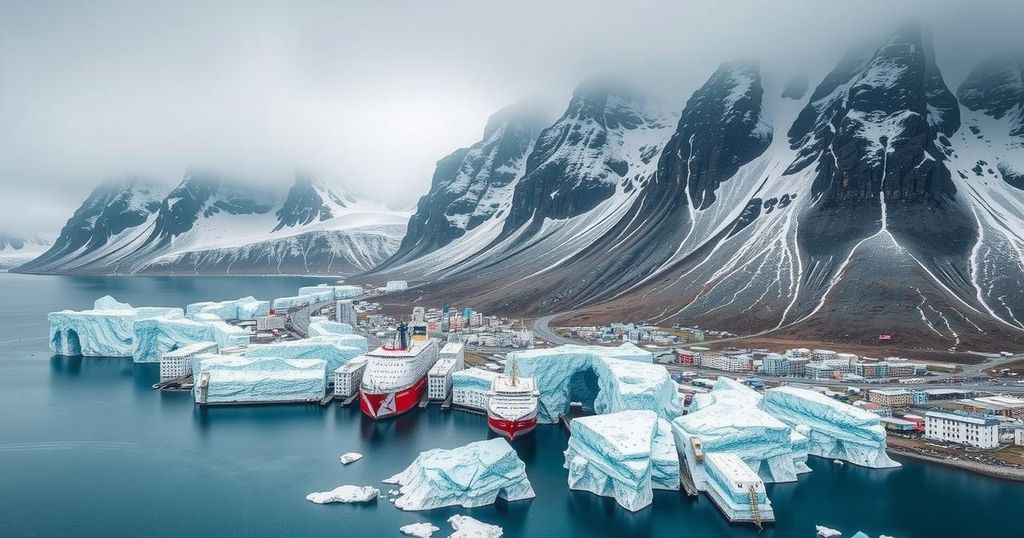Greenland is becoming increasingly crucial in the discourse surrounding climate change and international relations. The island’s accelerating ice melt contributes to rising sea levels, while its untapped resources garner interest from nations seeking mineral and energy supplies. Additionally, its strategic position in the Arctic enhances its geopolitical significance amid emerging trade routes, emphasizing the interplay between environmental science and global politics.
Greenland, the world’s largest island, has emerged as a pivotal player in global climate and geopolitical dynamics, particularly due to its significant ice reserves and natural resources. As a critical barometer for climate change, it is warming four times faster than the rest of the globe, making its melting ice a matter of international concern. In addition to being a semiautonomous territory of Denmark and housing a substantial U.S. military installation, Greenland is increasingly coveted for its untapped reserves of rare earth minerals, oil, and natural gas.
Climate scientists emphasize that Greenland acts like a thermostat for the planet; its vast ice reserves, if melted, could lead to a global sea level rise of up to 24 feet, fundamentally altering coastlines and weather patterns worldwide. The loss of ice from Greenland has accelerated dramatically, with an estimated 182 billion tons lost annually since 1992, peaking at nearly 489 billion tons in 2019. This hasty melting poses an irreversible threat to sea levels and atmospheric conditions.
Beyond natural resource extraction, Greenland’s geographical location is strategically significant, situated at the intersection of major powers like the United States, Russia, and Europe. As the Arctic opens up due to climate change, the potential for shipping and trade routes increases, amplifying geopolitical competition. Additionally, the melting ice shapes ocean currents, such as the Atlantic Meridional Overturning Circulation (AMOC), essential for regulating global climate and weather systems. A disruption of AMOC could lead to severe climatic anomalies, potentially freezing major parts of North America and Europe.
The changing landscape of Greenland also raises environmental concerns, as the island transitions from a reflective icy surface to absorbent ocean and land features, exacerbating global warming. Furthermore, the dynamic nature of Greenland’s ice influences weather phenomena worldwide, as exemplified in the case of Superstorm Sandy, which was partly steered by atmospheric changes over Greenland.
In summary, Greenland is not only a repository of natural resources but also a keystone in understanding and mitigating the impacts of climate change. As it continues to play a central role in both environmental and political realms, its future will undoubtedly shape critical climate discussions and global policies moving forward.
The significance of Greenland extends beyond its remarkable natural beauty; it occupies a central position in discussions about climate change and international politics. As the largest island on earth, it is a major indicator of climate shifts due to its vast ice coverage, which is melting at an alarming rate. The island’s strategic location in the Arctic enhances its geopolitical importance, particularly in the context of shifting global trade and shipping patterns influenced by new opportunities arising from climate change. Furthermore, the environmental implications of Greenland’s melting ice necessitate urgent attention as they pose a threat not only to its local environment but also to ecosystems and weather systems worldwide.
In conclusion, Greenland serves as a microcosm of the intersection between climate change and global politics. Its vast reserves of natural resources, combined with its crucial role in regulating the planet’s climate through its ice and ocean current systems, make it an area of immense interest to nations worldwide. As climate change accelerates and its geopolitical importance escalates, the international community must closely monitor developments in Greenland to address both environmental challenges and strategic interests effectively.
Original Source: www.washingtonpost.com






